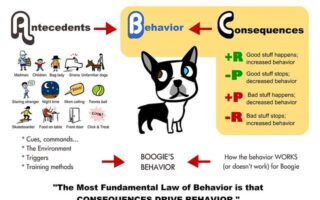Title: Exploring the Importance of the Perfect Puppy Leash
Welcoming a new puppy into your home is a joyous adventure, filled with laughter, wagging tails, and the promise of countless unforgettable moments. As you embark on this journey, one essential item stands out amidst the flurry of chew toys and cozy blankets—the puppy leash. More than just a tool for keeping your energetic companion safe, a leash symbolizes the bond between human and dog, paving the way for exploration, training, and socialization. In this article, we’ll delve into the world of puppy leashes, examining their various types, purposes, and the best practices for choosing the right one to ensure that every walk becomes an enjoyable experience for both you and your new furry friend. Whether you’re a first-time puppy owner or a seasoned canine enthusiast, understanding the significance of an appropriate leash can enhance your relationship with your pet and enrich your outings together. So, let’s leash up and step into a world of discovery!
Table of Contents
- Choosing the Perfect Puppy Leash for Training and Safety
- Exploring Materials and Features that Enhance Comfort and Control
- Tips for Leash Etiquette: Teaching Your Puppy to Walk on a Lead
- Maintaining Your Puppy Leash: Care and Storage Guidelines
- Q&A
- To Wrap It Up
Choosing the Perfect Puppy Leash for Training and Safety
When it comes to training your new puppy, the choice of leash plays a crucial role in teaching obedience and ensuring safety. A leash is not just a tool for control; it can also enhance the bonding experience between you and your furry friend. Look for a leash that strikes the perfect balance between durability and comfort. Nylon and polyester options are great for their strength and lightweight nature, while leather provides a classic look and feel. Consider a width that suits your puppy’s size; narrower leashes are often ideal for smaller breeds, while thicker options lend extra security for larger pups.
Additionally, you’ll want to explore various styles to meet your training needs. Here are some popular options to consider:
- Standard Leash: A simple, fixed-length leash ideal for daily walks.
- Training Leash: A longer design that allows more freedom while maintaining control.
- Retractable Leash: Offers adjustable lengths for added flexibility during walks.
- Head Halters: Provides gentle control without stressing the neck.
Ultimately, the right leash will contribute to a safer environment and a smoother training process. Make sure to match the leash features with your puppy’s specific training goals and safety requirements for a successful companionship.
Exploring Materials and Features that Enhance Comfort and Control
When choosing a puppy leash, the materials and construction can significantly impact both the puppy’s comfort and the owner’s control. Opt for soft, durable materials such as padded nylon or biothane, which are not only comfortable for your pup but also weather resistant. This ensures that your leash can handle the rigors of daily use in various conditions. Look for features like reflective stitching or elements, enhancing visibility during night walks, and adjustable lengths, allowing for flexibility as your growing puppy learns to walk nicely on a leash.
In addition to the leash material, consider the added features that can enhance your experience. Specific leashes now offer built-in traffic handles, providing more control when navigating crowded areas. A quick-release mechanism helps you easily detach your puppy, making it convenient when entering public spaces. To illustrate these exciting options, here’s a simple comparison:
| Feature | Benefit |
|---|---|
| Padded Straps | Reduces hand strain and enhances comfort. |
| Adjustable Length | Offers versatility for different situations. |
| Reflective Elements | Improves safety during nighttime walks. |
| Traffic Handle | Increases control in crowded areas. |
| Quick-Release Mechanism | Provides easy detachment when needed. |
Tips for Leash Etiquette: Teaching Your Puppy to Walk on a Lead
Establishing good leash etiquette with your puppy is essential for enjoyable walks and a well-behaved companion. Start by choosing the right leash and collar. A lightweight leash, ideally 4 to 6 feet long, allows for control while giving your puppy room to explore. Always opt for a collar or harness that fits snugly, preventing any escape attempts. Begin training in a familiar environment, gradually introducing distractions as your puppy becomes more comfortable. Here’s a quick list of tips to ensure a smooth learning experience:
- Use positive reinforcement: Rewards like treats and praise can motivate your puppy to walk calmly on a lead.
- Practice loose-leash walking: Encourage your puppy to stay by your side without pulling.
- Keep sessions short: Puppies have short attention spans; aim for 5-10 minute training sessions.
- Stop when pulling occurs: If your puppy pulls, stop walking and wait for them to return to your side before continuing.
Consistency is key. Create a routine that includes regular leash practice. Incorporate various environments, like quieter streets or local parks, but adapt based on your puppy’s comfort level. Monitor their body language and maintain a patient demeanor; every puppy learns at their own pace. Consider the following scenarios and how to address them:
| Scenario | Solution |
|---|---|
| Puppy pulls ahead | Stop and wait, rewarding them when they return to your side. |
| Puppy sits or refuses to move | Encourage them with treats or a favorite toy to motivate movement. |
| Puppy gets distracted | Reinforce focus by calling their name and rewarding them for maintaining attention. |
Maintaining Your Puppy Leash: Care and Storage Guidelines
Taking proper care of your puppy’s leash not only extends its lifespan but also ensures a safe and enjoyable walking experience. Regular cleaning is essential, especially for leashes that are used frequently in varying weather conditions or on muddy trails. To maintain your leash, consider the following tips:
- Wipe Down: After each walk, use a damp cloth to remove dirt and debris.
- Wash It: For fabric leashes, gently hand wash with mild soap and water, then air dry.
- Inspect Regularly: Check for frays, wear, or damage that could compromise safety.
Storage plays a crucial role in maintaining the integrity of your leash. Keeping it organized and protected can prevent unnecessary wear and tear. Here are some effective storage solutions:
- Hang It Up: Use a hook or peg near your door for easy access and to avoid tangles.
- Keep It Clean: Store in a dry place to prevent mold and mildew, especially if it’s made of fabric.
- Bundle Up: For retractable leashes, make sure to wrap the cord properly to avoid kinks.
Q&A
Puppy Leash Q&A
Q1: What is the purpose of a puppy leash?
A1: A puppy leash serves as a vital tool for pet owners, ensuring the safety and control of their furry companions during outdoor adventures. It allows you to guide, redirect, and protect your puppy while teaching them essential leash manners.
Q2: Are there different types of puppy leashes?
A2: Absolutely! Puppy leashes come in various styles to suit different dogs and their owners. Common types include standard flat leashes, retractable leashes for freedom of movement, hands-free options for joggers, and training leashes designed to reinforce good behavior. Each type has its advantages based on your activity level and the training needs of your puppy.
Q3: When should I start leash training my puppy?
A3: The best time to start leash training is as early as 8 weeks old. Puppies are like sponges, absorbing everything around them. Introducing a leash gently during their formative weeks encourages a positive association, making future training sessions much easier and more enjoyable.
Q4: What are some tips for leash training a puppy?
A4:
- Use positive reinforcement: Reward your puppy with treats and praise when they walk nicely on the leash.
- Set the pace: Start in a quiet area to minimize distractions. Gradually introduce them to busier environments.
- Stay patient: Puppies can be easily distracted. If they pull or stray, gently guide them back without yanking. Consistency is key.
- Practice makes perfect: Regular short walks can help reinforce good lead behavior, ensuring it becomes second nature.
Q5: How long should a leash be for a puppy?
A5: A standard leash length is typically six feet, providing a balance between control and freedom. However, for tiny breeds, a shorter leash may be more appropriate. Consider your puppy’s size, breed, and walking style when choosing the perfect length!
Q6: What if my puppy pulls on the leash?
A6: If your puppy is a puller, try to keep your walks engaging. When they pull, stop moving until they ease up on the tension. It’s important they learn that pulling doesn’t lead to progress. Consider using a front-clip harness or training collar designed to discourage pulling without causing discomfort.
Q7: How can I make walks more enjoyable for my puppy?
A7: Enrichment is essential! Allow time for sniffing and exploring during walks, as these activities provide valuable sensory experiences. Mix things up with different routes and locations to keep their interest piqued while maintaining control with the leash.
Q8: Can I use a leash with a harness?
A8: Yes! Harnesses are often recommended, especially for puppies prone to pulling. They distribute pressure across the body rather than the neck, which can help prevent injury. The combination of a harness and a leash can enhance comfort while giving you better command of your puppy’s movements.
Q9: How do I know if I’ve chosen the right leash for my puppy?
A9: The right leash should feel comfortable in your hand and be suitable for your puppy’s size and breed. Look for a sturdy yet lightweight design that allows for easy handling. Test it out during your walks; if it complements your interactions and keeps your puppy secure, you’ve made a great choice!
Q10: Any final thoughts on owning a puppy leash?
A10: Invest in a good quality leash tailored to your puppy’s needs—it’s a fundamental piece of their toolkit for safe and happy outings. Remember, the goal is not just to restrain but to enjoy the bonding experience that comes with each walk. With the right leash and a little patience, you’re on your way to a well-mannered and happy puppy!
To Wrap It Up
As we wrap up our exploration of the ever-important puppy leash, it’s clear that this simple yet essential tool serves as more than just a means of restraint; it is a bridge between safety and freedom for our furry companions. The right leash can empower you to navigate the world alongside your puppy with confidence, transforming everyday walks into delightful adventures. Whether you’re choosing a lightweight option for a small breed or a sturdy design for larger pups, remember that each leash tells a story—one of trust, companionship, and exploration.
As you embark on your journey with your puppy, let the leash be a symbol of the bond you both share. So go ahead, clip it on with enthusiasm, and step into a world filled with wagging tails and curious noses. The journey awaits, and with a little patience and the right gear, your time spent together will be unforgettable. Happy walking!



